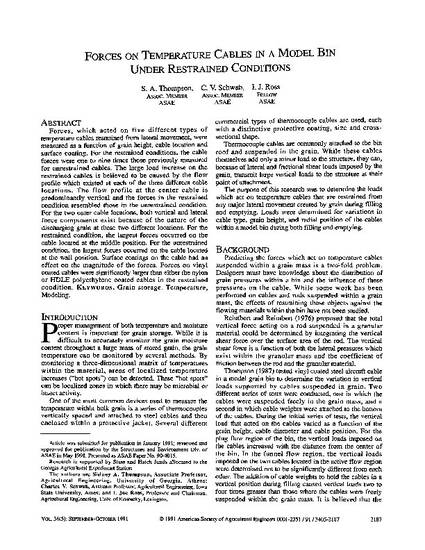
Temperature cables restrained from lateral movement, were measured as a function of grain height, cable location and surface coating. For the restrained conditions, the cable forces were one to nine times those previously measured for unrestrained cables. The large load increase on the restrained cables is believed to be caused by the flow profile which existed at each of the three different cable locations. The flow profile at the center cable is predominantly vertical and the forces in the restrained condition resembled those in the unrestrained condition. For the two outer cable locations, both vertical and lateral force components exist because of the nature of the discharging grain at these two different locations. For the restrained condition, the largest forces occurred on the cable located at the middle position. For the unrestrained condition, the largest forces occurred on the cable located at the wall position. Surface coatings on the cable had an effect on the magnitude of the forces. Forces on vinyl coated cables were significantly larger than either the nylon or HDLE polyethylene coated cables in the restrained condition.
Available at: http://works.bepress.com/charles_schwab/3/

This article is from Transactions of the ASAE 34, no. 5 (1991): 2187–2192.